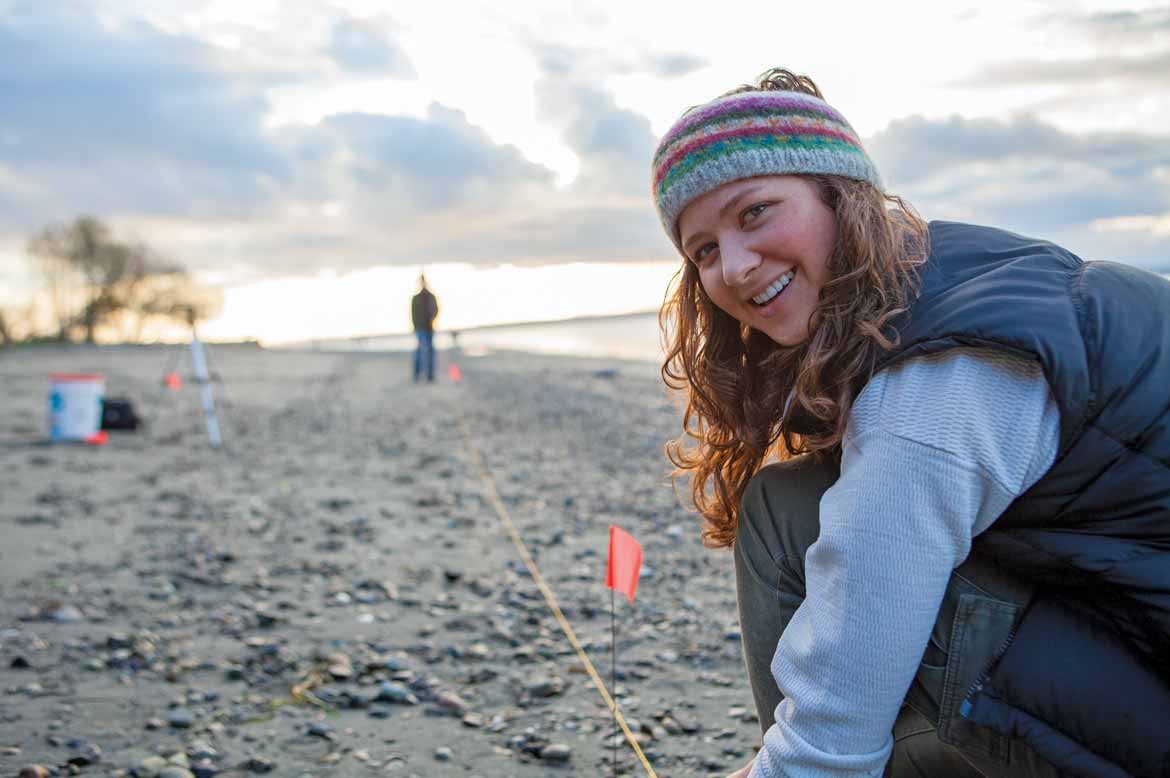
Senior Alli Cutting sets up a transect at North Beach in Seattle.
During the summer of 2012, Alli, an ecology major, and Associate Professor of Biology Ryan Ferrer regularly traveled to one of six Puget Sound beaches, arriving an hour before low tide. They would find a particular starfish (Pisaster ochraceus), measure off a 100-by-50-meter area of the beach, and place the starfish in the center of the rectangle, called a transect. Then Alli waited to see whether glaucous-winged gulls (Larus glaucescens) would attack. Gulls could attack starfish anywhere on the beach, but Alli’s transect helped her focus her observations.
Some days were action-packed, with gulls fighting over the starfish. Other days, no shorebirds arrived. But those days weren’t wasted. If no birds appeared, they could think about why the birds weren’t there.
Alli’s summer field research project contributed to a larger ecological study Ferrer is doing to see how paralytic shellfish toxin — a naturally occurring chemical caused by algal blooms — affects starfish in the rocky intertidal areas of Puget Sound. Previous research shows that shorebirds avoid eating toxic shellfish. So, would birds avoid eating starfish on beaches where shellfish were toxic?
Alli doesn’t know the answer for sure — more research is needed. But the experience, designed in collaboration with her professor, confirmed her love for field work.
Ferrer encourages his students toward research opportunities that suit their particular interests. “I knew Alli enough to know that she loved the outdoors, so to stick her in a lab with a microscope for hours on end didn’t seem to suit her,” he says. He helped Alli set up the experiment, and encouraged her to strike out on her own, even as he worked on the same beaches, collecting data for another starfish-related project.
Running her own experiment made Alli “a bit nervous at first,” she says. But she also believes it built confidence.
“It made me feel like a scientist.”